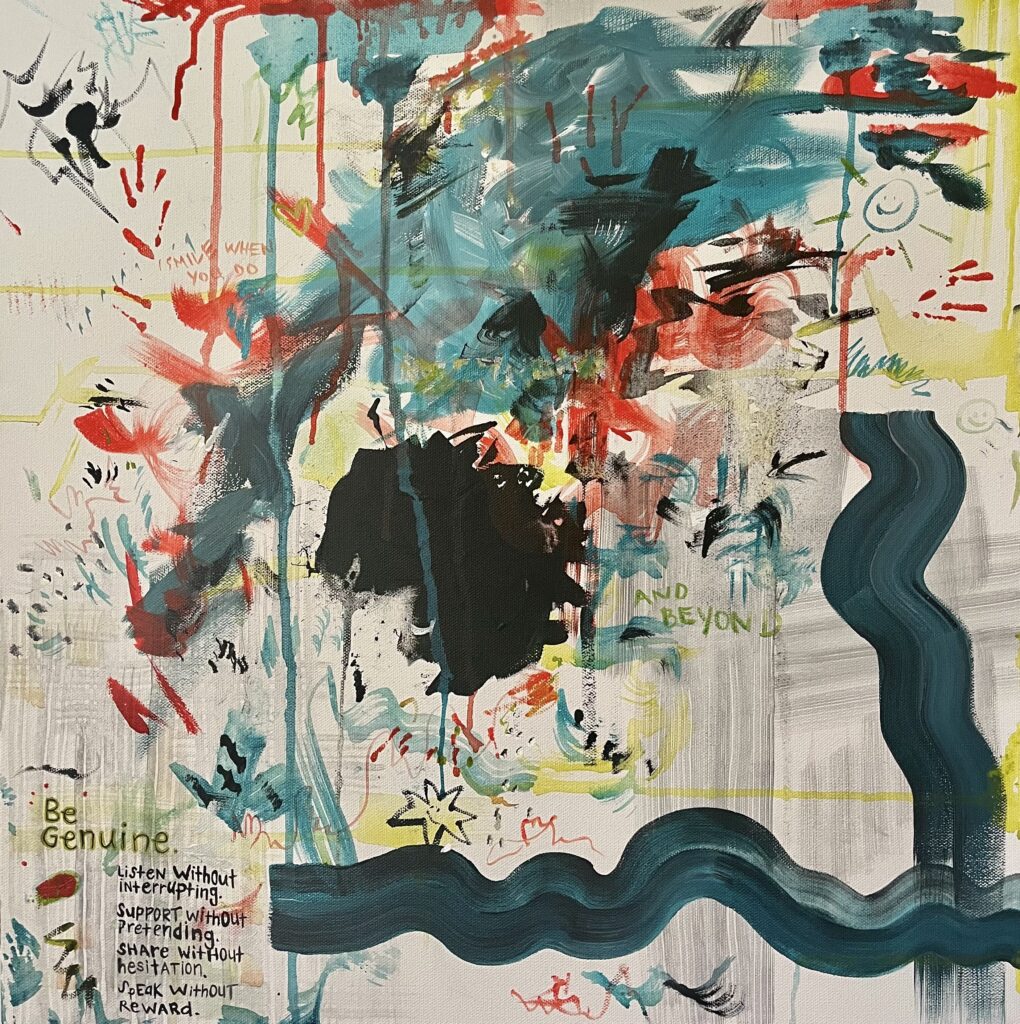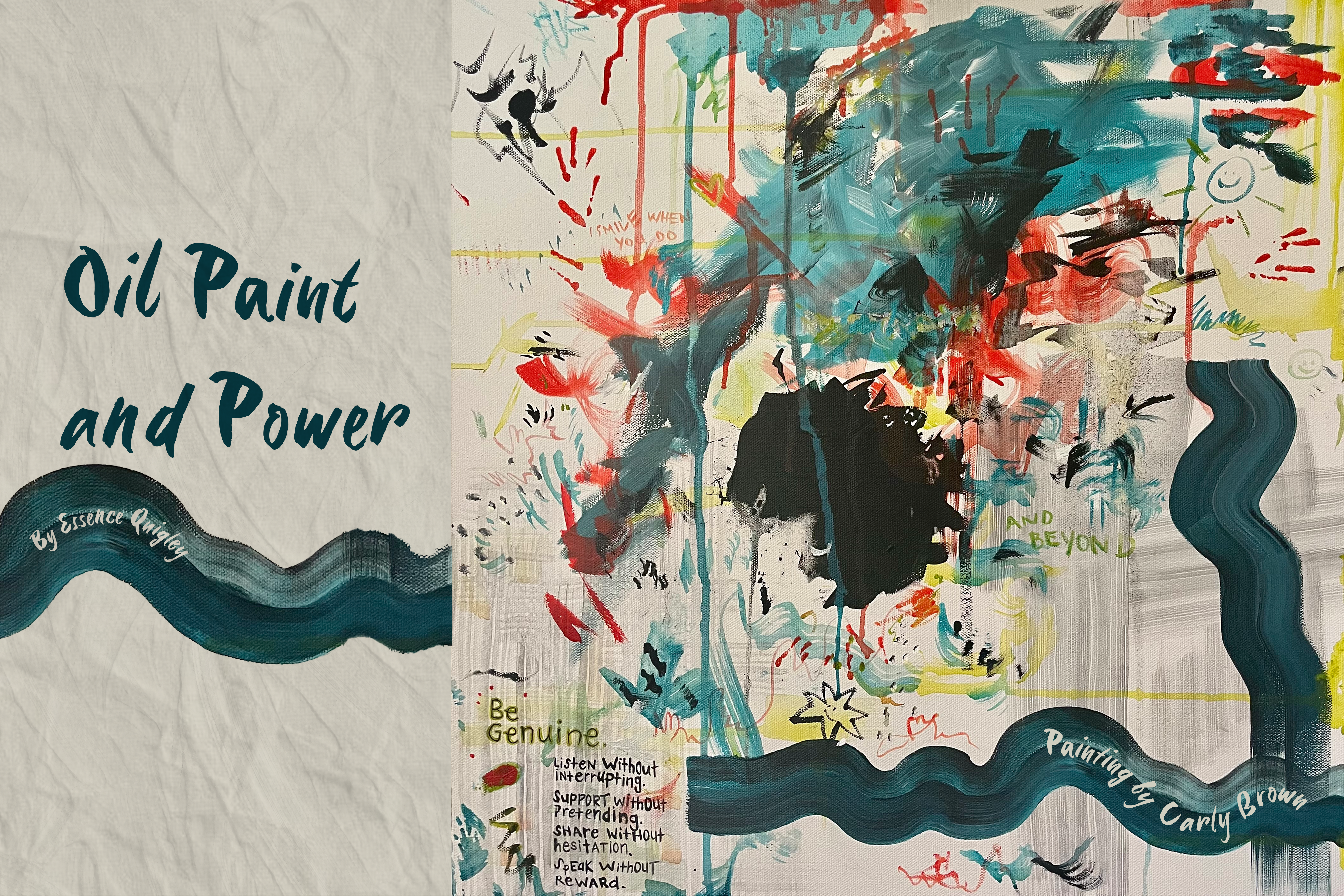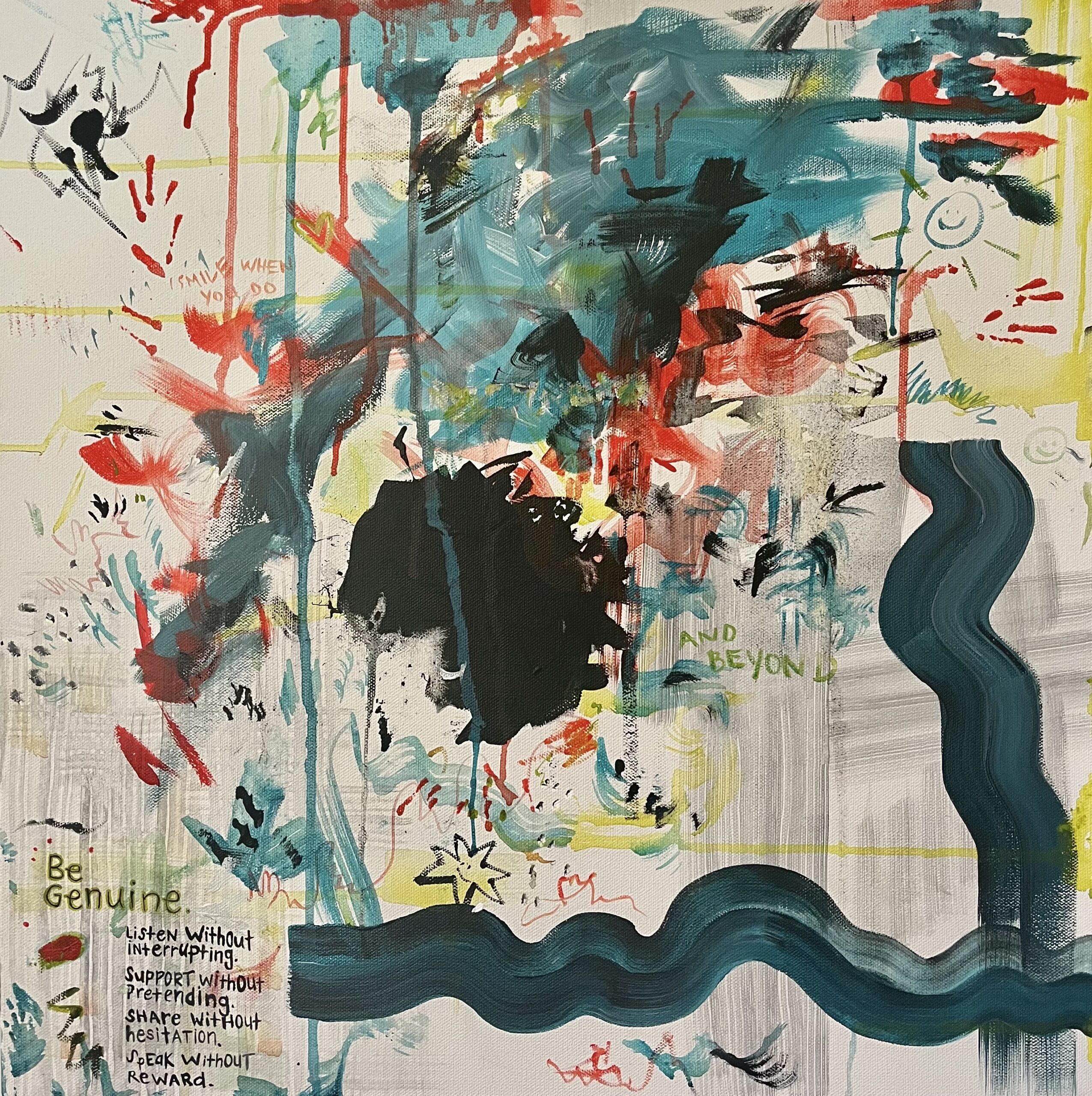By Essence Quigley – Painting by Carly Brown @artby13brown

● Material:
Historically, rare minerals have been used to create different pigments. One of the most expensive was lapis lazuli, showcasing either the subject or the artist’s wealth. It’s a stone found in the mountains of Iran and Afghanistan and has been used since the Antiquity Era. However, it was only utilized sparingly as a glaze because of its rarity, with azurite used mainly to achieve the color blue.
● Size
Size was commonly used to show power in classical art. Figures, especially kings, scholars, and higher-class individuals, were astronomically enlarged as a symbol of strength and power. A viewer of King Henry VIII’s portrait would have to look up at him in awe as his figure fills nearly the entire canvas.
● Distorted Perspective
Distorted perspective is an unconventional one as it doesn’t outwardly project physical strength but the power of intellect. Artists have historically been viewed as magical, and Hans Holbein’s The Ambassadors continues that tradition of thought. Holbein places the image of a skull that is only legible when viewed from the side. This not only brings power to the artist but humbles The Ambassadors. Although they are wealthy, they all meet the same fate as us.
● Power of Propaganda
Artists are at times asked to paint an image of persuasion. It could be persuading citizens to join the army or reinventing events in history to make one look favorable. Take Napoleon Crossing the Alps, where the former leader of France is pictured calm and collected on a wild horse. His name is inscribed on a rock next to Charlemagne and Hannibal. This clearly sends the message that Napoleon was a brave leader who rode alongside his troops and, therefore, should be placed in history side by side with legends. But history shows the exact opposite. According to historians, he wasn’t a confident rider and actually crossed the Alps on a mule—but history is none the wiser.


